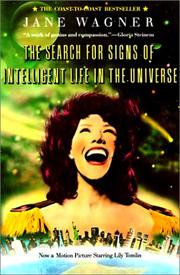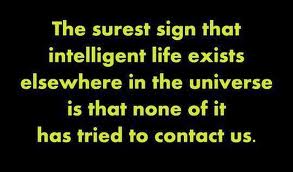Invinci-Man slammed into him with a bone-crunching wallop, his massively muscled arms wrapping Jackson in a super powered bear hug. Jackson squirmed to break the grip, but his borrowed strength had run out. He was helpless as a field mouse in the clutches of a hawk. Gone was the look of casual indulgence on Invinci-Man’s face. A cruel glimmer shined from his eyes. Jackson felt exposed as a newborn in the light of the other’s utterly ruthless gaze. “We’re done toying with you.”
Invinci-Man went into a sudden dive. Jackson’s gut lurched. Within a millisecond of hitting the ground, Invinci-Man released his hold on the armored man with a shove and shot upward. Jackson torpedoed into the top of a tractor-trailer truck. Both tractor and trailer were sheared in half on impact an instant before the collision’s full force shredded them to scrap, producing a bruising shock wave that blew out every window in every building in the vicinity.
Jackson groaned. Half his body was embedded in concrete beneath the tractor/trailer’s flaming wreckage. His climate control must have been shot, which explained the failure of his armor to provide insulation from the ferocious fire-generated heat. He needed to get up and out before he baked to death inside his armor. He tried to extricate himself, but the entire left side of his suit refused to respond to his neuro-linked nudge. “NEED HELP?”
Jackson looked up to see the Nile Goddess plunging into the fire with star staff raised. She brought the staff down in a blurring stroke, striking Jackson’s paralyzed left shoulder. A crimson orb issued rapidly from the blow, followed by a powerful blast that tossed up an oil black mushroom cloud. A hot breeze cleared away the worst of the smoke. Jackson lay prone at the center of a deep, steaming depression.
Parts of his armor hung in scorched, tattered strips, barely connected to its pliable, carbon-nanotube inner layer. In some places the armor became porous, oozing globs of inertial gel. His AVD flickered in and out. Snowy static clouded the remainder of his displays. Of course he didn’t need diagnostics to tell him that his suit was no longer functional. As for his body, he ached to high hell from that final round of abuse inflicted on him by Invinci-Man and Candace.
The slightest motion ignited a firestorm of pain. But he weathered the suffering, rising slowly to his knees. He could rise no more. He pulled a string of release tabs along the upper section of his neck guard and removed his helmet, tossing it aside. Jackson ran a hand down his face, wiping away perspiration.
He lifted his head and saw that he was surrounded. Invinci-Man, the Nile Goddess, Windrider, the Blue Blur, and Machine-Ware loomed above him from the ridge of the depression. Undoubtedly, they would have slaughtered him on the spot. All it took was one word from Invinci-Man. Jackson stared at Invinci-Man, partly resigned, partly defiant, and waiting for the latter to give that word.
Instead, the leader of the Guardian Protectors hovered and descended into the pit, his expression softened by sympathy and memories of bygone fraternity. Jackson remembered as well, and for a moment the two men shared fond memories in silence. “What happened to you, Jeff?” Jackson asked with a tinge of anguish. “How did you of all people cross that line from a noble caretaker to being no better than the thugs, lowlifes, and murderers we used to battle?”
Invinci-Man tilted his head, his brow narrowing as if mulling over the question. “Call it enlightenment. One day an epiphany hit me. I realized that people don’t need caretakers, they need prison guards. They need control, discipline, structure. And if they go astray they need swift, harsh punishment to correct their errors. Who else can provide these things other than those of us endowed with the capabilities, be it by accident, design or birth, to exert our will over this depraved planet?”
“How has the killing of innocents made this world any better than before you decided to run rough shod over it?”
“I don’t worry about the innocent. What is that saying?” Invinci-Man caressed his broad chin in a show of thought. “Ah, yes…let God sort them out.” He settled on his haunches, looking Jackson square in the eye, scrutinizing, searching. “Your self righteous platitudes choke with hypocrisy. You hadn’t always abided by the law in your crime fighting. For all the wonderful hi-tech toys that sprang out of that genius head of yours, you were still nothing but a vigilante.”
Jackson dropped his eyes. “You’re right. I was a vigilante, albeit a glorified one. I admit to operating outside the law when I had to accomplish an objective. But this…what you and the others are doing…I never embarked down that path.”
“But you considered it! Didn’t you, Victor?!” Invinci-Man leaned in close until his piercing, umber eyed glare became the only object in Jackson’s scaled down universe. “Be honest. You never thought once about using your suit to its fullest potential?” Fullest potential. The question stung in ways Jackson couldn’t disregard. He kept his eyes averted, unwilling…or unable to meet the other’s gaze. Invinci-Man stood, choosing not to press for an answer. His tone weighed heavy with regret.
“You should have joined us, Victor. I hate that you forced me into this position. I would just love to plop you inside a maximum security lockbox somewhere far from civilization. But then I’d have to spend my every waking hour worrying that you might figure a way to escape. We can’t be distracted by loose ends. Not while we’re in the midst of whipping this world into shape. I can make this quick and painless for you. It’s the least I can do for a friend.” Jackson eased his way to a standing position. Pain surged like electricity through his body.
“Thanks for the offer, Jeff,” he managed through gritted teeth. “But I have a second option.” Invinci-Man possessed multi-spectrum vision. Had he used the X Ray portion, he would have spotted a thumbnail size wafer lodged beneath Jackson’s temple. Jackson pressed a finger to his temple, activating an implant. That action sent up a transmission to a satellite orbiting in geo-sync directly above Valor City’s South District. Invinci-Man’s brow crinkled in suspicion. Suspicion morphed into alarm.
He made a move toward Jackson. “What are you…” A haze of light suddenly filled the depression. Jackson squeezed his eyes shut. Even so, the searing brightness soaked through his eyelids, fully immersing him in a glaring void of white. Seconds, moments, minutes may have passed. Jackson had no idea. It was like he slipped into a crease in time.
Slowly, he opened his eyes. Invinci-Man was gone. Jackson searched the ridge. The others were also gone, seized by the light. “And this was the least I could do for a friend.” Jackson sank back to his knees as exhaustion took its toll. Intelligence Chief Yohannes Brady approached the ambulance where a paramedic just completed wrapping Victor Jackson’s ribs in bandages. Jackson gently prodded the area above his two cracked ribs and winced. Brady expressed something close to paternal concern.
“How are you, Ace?” Jackson’s lips parted minimally in a tired smile.
“I could be better.” He gave a thumbs up. “But I’m alive.” The intelligence chief looked around, taking in the bleak sight of a neighborhood resembling old footage he’d seen of Berlin in the aftermath of World War II. The place had truly been a warzone. The difference in this case was that the combatants comprised one human, of extraordinary brilliance with technology to match, pitted against a squad of super-powered psychopaths. Brady had to shake his head at the wonder of it all.
“Your suit held out pretty well. Longer than I expected to be honest.” “It took some hellified punishment, didn’t it?” Jackson boasted. On a serious note, he added: “I upgraded it. I needed it to last just long enough for me to gather them in one area.”
“And spring your trap,” Brady finished. “What exactly was that light beam from the sky? A weapon? Did it kill them?”
Jackson shook his head. “No, they’re not dead…at least I’m sure they’re not. There exists multiple universes, multiple realities. I discovered a way to open a door to any one of them. The satellite I built created a portal.” Brady gave a look verging on merriment.
“You sent Invinci-Man and his gang to another universe?”
“I’m not exactly comfortable with that outcome,” Jackson qualified soberly. “I would’ve liked to have had time to vet universes before I used the portal. Now, I’m afraid I might have sent them to a populated realm where they’ll be able to duplicate the terror they’ve created here. But I needed to get them out of this universe with all due haste, before they caused further pain and suffering.”
The intelligence chief nodded thoughtfully. “Humanity is going to be damn grateful to you for getting rid of them. And don’t worry. Chances are you sent those bastards to a place without people. They could be stranded on a dead world.”
Jackson considered the possibility. “Could be.” At that moment, a sleek black SUV limo pulled up beside the ambulance. The driver, a long-legged, cocoa skinned beauty (whom Brady suspected might have served Jackson in other ways) emerged from the vehicle.
“Mr. Jackson, thank God you’re all right,” said the driver reaching for her employer’s arm. “Hello, Chastity…no, please, I don’t need help. Thank you.” Chastity held back her assistance, but remained vigilantly close as Jackson moved gingerly toward the limo.
“And where are you off to?” Brady asked.
“Home,” replied Jackson. “I’m going to hit the sack and sleep for a week…maybe two.”
“Oh.” Brady looked troubled and hesitant, but only for a second. He tried to mask his unease with affability. “Hey, uh, why don’t you hang out with me for a little while. We can run to the local office, you provide a debrief, and afterward I’ll treat you to your favorite restaurant.” Nothing in the intelligence chief’s manner escaped Jackson’s keen notice. Which is why he enjoyed seeing the other trying to suppress a squirm as he refused the invitation.
“Appreciate the invite, but I’ll debrief later. And my favorite restaurant is not in this city. It’s not in this country for that matter.”
Chastity opened the limo door. “Victor,” Brady called out. “How does it feel being the only Guardian Protector?”
Jackson’s expression dimmed with melancholy. “I’m no longer a Guardian Protector. They don’t exist anymore.” He stepped into the limo and the driver closed the door. An hour later, Jackson entered his ops center located in the basement level of his mansion. Chastity Hunter, his driver and assistant, frowned her disapproval, insisting her employer get some much needed rest. Jackson kindly declined her advice. Rest could wait for a few minutes. There was something he needed to check on. The side walls of his ops room were lined with book shelves that were neatly stocked with thousands of volumes. The facing wall was a gigantic terminal screen that doubled as a CCTV monitor.
A brown leather bound swivel chair and a large maroon desk with a computer and keyboard sat in the center. Jackson noticed the swivel chair was turned a hairbreadth of a degree to the left, evidence of an intrusion. His suspicion was confirmed. There were other ways he could tell that he’d been breached. One of them he picked up from MachineWare who long ago constructed micro-size video pickups the size of dust particles. Jackson had deposited a small handful of the micro-cams throughout the ops room, on the floor, the book shelves, the desk.
He pressed a key on the keyboard, bringing the wall screen to life. Then he inputted a code that pulled recorded visual data from the micro-cams and transferred it to the screen. A view of the ops room from the perspective of the west facing book shelf came up. Three figures in black skulked into the picture. One took a seat at the desk. The other two did a circuit around the room before taking guard positions on opposite sides of the door.
Dressed in head to toe black combat gear and armed with short barreled assault weapons, Jackson had no doubt the intruders were Intelligence Branch Para-Military ops soldiers. He fast-forwarded the scene. The soldier at his desk was typing on the keyboard. Jackson knew what the soldier was after. He was trying to crack Jackson’s network, gain access to his files in order to steal his technology. It was the schematics to the armored suit that they wanted in particular. That was the prize. Instead of feeling alarmed or violated, a certain amusement fell over Jackson. Brady’s people thought they had executed a clean in and out operation, undetected.
Of course, they did manage to bypass his security to get this deep into the mansion. Jackson would give them that. The Intelligence Branch didn’t recruit slouches. Good as the organization was, however, it wasn’t that good. The intruders still failed to hack into his files. Jackson tapped another key, bringing up a schematic of his suit. His network remained the most secure on the planet.
If the full resources of the federal government couldn't break it, no one could. He smiled. He actually liked Brady and had worked with the intelligence chief in the past. Strip away layers of subterfuge and a good person lay at the core of that which was Brady. Nevertheless, Jackson trusted the man about as far as he could toss the moon. Jackson plopped in his chair, fixated on the schematic. His thoughts raced back to the question Invinci-Man asked him…the question he didn’t want to answer.
But Jackson knew the answer. The temptation to abuse the power of his suit dogged him like a bad habit since he built the thing. The urge still beckoned, a devil’s enticing whisper appealing to the very worst aspect of himself, an aspect he could ill afford to let loose upon the world. He couldn't…would not follow the others down that dark path. Oh well. There was only one way to overcome temptation: get rid of the source. He could have turned over the suit’s schematics to the government. No good. The military would have replicated it. One super advanced armored suit had been enough. A mass produced army of suit wearing killers amounted to an affliction the world could damn well do without.
His finger hovered over the delete button. He faltered for a few seconds, before tapping the key. The schematic vanished from his screen. Years of research, development, creation… purged… gone. Jackson’s shoulders slumped. He was an ordinary citizen again. The world would have to tackle its own problems. Humanity didn’t need superheroes. It didn’t need caretakers. He stared at a blank screen, staving off feelings of loss and emptiness. He would get over it in time. He stood and walked out of the ops room.
He never looked back.







